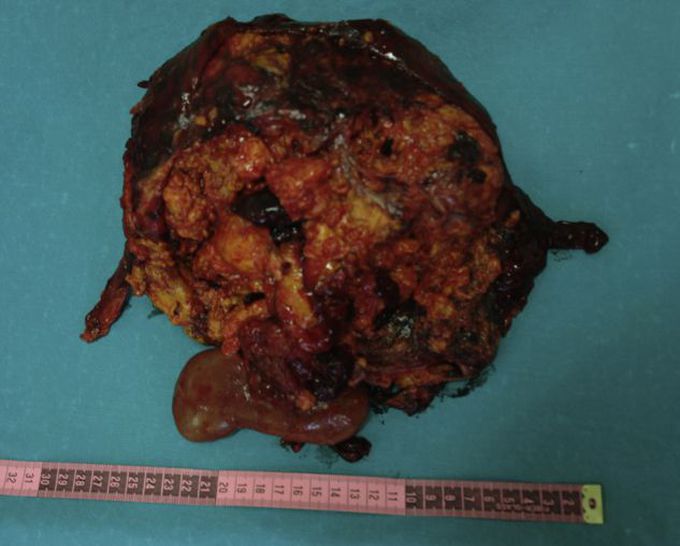


Renal Angiomyolipoma and the Dreaded Wunderlich Syndrome
Angiomyolipoma is a rare benign tumor that most commonly arise in kidneys; spleen, liver and uterus may also develop angiomyolipoma sporadically. Most of the cases of renal angiomyolipoma are associated with tuberous sclerosis. Renal angiomyolipoma is typically asymptomatic, hence the finding is incidental. However, few conditions predispose individual to spontaneous rupture of the said tumor. These risk factors include coagulopathy, post-partum hemorrhage and trauma to kidneys. Renal angiomyolipoma has typical presentation as denoted by Lenk’s triad: gross hematuria, flank pain and a palpable mass that is tender on touch. One of the dreaded complications of renal angiomyolipoma is Wunderlich Syndrome. The incidence of Wunderlich syndrome is 10% in patient with renal angiomyolipoma. It refers to spontaneous rupture of the tumor, resulting in excessive retroperitoneal hemorrhage and secondary hypovolemic shock. Wunderlich syndrome is an indication of urgent laparotomy and exploration to control the hemorrhage. Nephrectomy is usually considered in order to prevent future episodes of spontaneous rupture. Nephrectomy may also be done if kidney cannot be salvaged due to rupture of associated mass. Source: Spontaneous rupture of a giant renal angiomyolipoma—Wunderlich’s syndrome: Report of a case https://www.ncbi.nlm.nih.gov/pmc/articles/PMC4756198/#:~:text=Renal%20angiomyolipoma%20(AML)%20is%20an,painful%2C%20and%20occasionally%20life%20threatening. Image shows ruptured renal angiomyolipoma resulting in excessive hemorrhage. (via https://www.ncbi.nlm.nih.gov/pmc/articles/PMC4756198/#:~:text=Renal%20angiomyolipoma%20(AML)%20is%20an,painful%2C%20and%20occasionally%20life%20threatening.)

